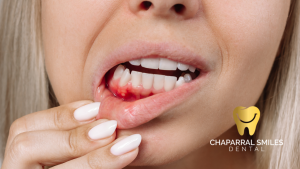Tooth decay in toddlers is a common problem that can have long-term effects on their oral health. There are several factors that contribute to tooth decay in young children. One of the main causes is poor oral hygiene habits. Toddlers may not have the dexterity to brush their teeth effectively, leading to the buildup of plaque and bacteria on their teeth. Additionally, toddlers are often given sugary snacks and drinks, which can contribute to the development of cavities. Another factor that can lead to tooth decay in toddlers is the frequent consumption of acidic foods and drinks, which can erode the enamel on their teeth. Furthermore, genetics can also play a role in a toddler’s susceptibility to tooth decay. If a child’s parents have a history of dental problems, they may be more likely to experience tooth decay themselves.
In addition to these factors, poor feeding habits can also contribute to tooth decay in toddlers. For example, putting a toddler to bed with a bottle of milk or juice can lead to prolonged exposure to sugars, which can increase the risk of cavities. It’s important for parents and caregivers to understand the causes of tooth decay in toddlers so that they can take steps to prevent it. By addressing these factors and establishing good oral hygiene habits from an early age, parents can help their toddlers maintain healthy teeth and gums.
Key Takeaways
- Tooth decay in toddlers is caused by frequent exposure to sugary foods and drinks, poor oral hygiene, and bacteria in the mouth.
- Establishing good oral hygiene habits from an early age, such as brushing twice a day and flossing, can help prevent tooth decay in toddlers.
- Choosing the right toothbrush and toothpaste for toddlers, such as a soft-bristled brush and fluoride toothpaste, is important for maintaining good oral health.
- Implementing a healthy diet for toddlers that includes plenty of fruits, vegetables, and dairy products can help prevent tooth decay.
- Regular dental check-ups for toddlers are essential for early detection and prevention of tooth decay and other oral health issues.
Establishing Good Oral Hygiene Habits from an Early Age
Establishing good oral hygiene habits from an early age is crucial for preventing tooth decay in toddlers. Parents should begin cleaning their child’s gums even before their first tooth emerges. Using a soft, damp cloth or gauze, gently wipe the baby’s gums after feedings to remove any bacteria or milk residue. Once the first tooth appears, it’s important to start brushing it with a small, soft-bristled toothbrush and water. As more teeth come in, parents should continue to brush their child’s teeth twice a day, using a small amount of fluoride toothpaste. It’s important for parents to supervise their child’s brushing until they are able to do it effectively on their own.
In addition to regular brushing, parents should also encourage their toddlers to floss once a day. Flossing helps remove food particles and plaque from between the teeth, where a toothbrush may not reach. Establishing good oral hygiene habits from an early age sets the foundation for a lifetime of healthy teeth and gums. By teaching toddlers the importance of brushing and flossing, parents can help them develop good habits that will protect their oral health as they grow.
Choosing the Right Toothbrush and Toothpaste for Toddlers
Choosing the right toothbrush and toothpaste for toddlers is essential for maintaining good oral hygiene. When selecting a toothbrush for a toddler, it’s important to choose one with soft bristles and a small head that is designed specifically for young children. The bristles should be gentle enough to clean the teeth without causing any damage to the gums. Additionally, parents may want to consider a toothbrush with a non-slip grip to make it easier for their toddler to hold.
When it comes to choosing toothpaste for toddlers, parents should look for a fluoride toothpaste that is approved by the American Dental Association (ADA). Fluoride is important for preventing cavities and strengthening the enamel on the teeth. However, it’s crucial to use only a pea-sized amount of toothpaste for toddlers, as swallowing too much fluoride can lead to fluorosis, a condition that causes white spots to develop on the teeth. Parents should also avoid using toothpaste with artificial sweeteners or flavors, as these can be harmful if swallowed in large amounts.
In addition to choosing the right toothbrush and toothpaste, parents should also replace their child’s toothbrush every three to four months, or sooner if the bristles become frayed. By selecting the appropriate tools for oral hygiene, parents can help their toddlers maintain healthy teeth and gums.
Implementing a Healthy Diet to Prevent Tooth Decay
| Healthy Diet Component | Impact on Tooth Decay |
|---|---|
| Fruits and Vegetables | Provide essential vitamins and minerals for strong teeth and gums |
| Dairy Products | Contain calcium and phosphates that strengthen tooth enamel |
| Whole Grains | High fiber content promotes saliva production, which helps protect against tooth decay |
| Sugary and Starchy Foods | Contribute to plaque formation and tooth decay if consumed in excess |
| Acidic Foods and Drinks | Erode tooth enamel and increase risk of decay |
Implementing a healthy diet is crucial for preventing tooth decay in toddlers. The foods and drinks that toddlers consume can have a significant impact on their oral health. Parents should aim to provide their children with a balanced diet that includes plenty of fruits, vegetables, whole grains, and lean proteins. These foods are not only beneficial for overall health but also for dental health. Fruits and vegetables contain vitamins and minerals that help strengthen the teeth, while whole grains provide fiber that can help clean the teeth.
On the other hand, sugary snacks and drinks should be limited in a toddler’s diet. Sugars can feed the bacteria in the mouth, leading to the production of acids that can erode the enamel and cause cavities. Instead of sugary snacks, parents can offer their toddlers healthier alternatives such as cheese, yogurt, or nuts, which can help neutralize acids in the mouth and reduce the risk of cavities. Additionally, it’s important for parents to encourage their toddlers to drink water throughout the day, as water helps rinse away food particles and acids that can lead to tooth decay.
By implementing a healthy diet for their toddlers, parents can help protect their children’s teeth from decay and promote overall well-being. Teaching children about the importance of nutrition and its impact on oral health can set them up for a lifetime of healthy eating habits.
Regular Dental Check-ups for Toddlers
Regular dental check-ups are essential for maintaining good oral health in toddlers. It’s recommended that children have their first dental visit by their first birthday or within six months of their first tooth emerging. During these early visits, the dentist can check for any signs of tooth decay or other dental issues and provide guidance on proper oral care for toddlers.
Subsequent dental check-ups should occur every six months or as recommended by the dentist. These visits allow the dentist to monitor the child’s oral development and address any concerns before they become more serious problems. Additionally, regular dental check-ups provide an opportunity for parents to ask questions about their child’s oral health and receive guidance on topics such as teething, thumb sucking, and pacifier use.
By scheduling regular dental check-ups for their toddlers, parents can stay proactive about their child’s oral health and address any issues early on. Early intervention can help prevent more serious dental problems from developing and ensure that toddlers maintain healthy teeth and gums as they grow.
Limiting Sugary Snacks and Drinks

Limiting sugary snacks and drinks is crucial for preventing tooth decay in toddlers. Sugars can feed the bacteria in the mouth, leading to the production of acids that can erode the enamel and cause cavities. To reduce the risk of tooth decay, parents should limit their toddler’s consumption of sugary foods such as candy, cookies, and sweetened cereals. Additionally, sugary drinks such as soda, fruit juice, and sports drinks should be limited or avoided altogether.
Instead of sugary snacks and drinks, parents can offer their toddlers healthier alternatives such as fruits, vegetables, cheese, yogurt, or nuts. These foods not only provide essential nutrients for overall health but also help neutralize acids in the mouth and reduce the risk of cavities. Furthermore, encouraging toddlers to drink water throughout the day can help rinse away food particles and acids that can lead to tooth decay.
By limiting sugary snacks and drinks in their toddler’s diet, parents can help protect their children’s teeth from decay and promote overall well-being. Teaching children about the importance of nutrition and its impact on oral health can set them up for a lifetime of healthy eating habits.
Tips for Soothing Teething Discomfort in Toddlers
Soothing teething discomfort is an important aspect of caring for toddlers’ oral health. Teething can be a challenging time for both toddlers and parents as new teeth emerge through the gums, causing discomfort and irritability. To help soothe teething discomfort in toddlers, parents can offer various remedies such as teething toys, chilled washcloths, or gentle gum massages with clean fingers.
Teething toys provide babies with something safe to chew on, which can help relieve pressure on the gums and alleviate discomfort. Parents should choose teething toys that are made of soft rubber or silicone and are free from harmful chemicals or choking hazards. Chilled washcloths can also provide relief by numbing the gums and reducing inflammation. Parents can wet a clean washcloth with cold water, then place it in the refrigerator for a few minutes before giving it to their toddler to chew on.
In addition to teething toys and chilled washcloths, gentle gum massages can help soothe teething discomfort in toddlers. Using clean fingers, parents can gently massage their child’s gums to provide relief from soreness and pressure. It’s important for parents to be patient and understanding during this time and provide comfort to their toddlers as they go through this natural developmental stage.
In conclusion, caring for toddlers’ oral health requires a combination of good oral hygiene habits, a healthy diet, regular dental check-ups, and proactive measures to soothe teething discomfort. By understanding the causes of tooth decay in toddlers and taking steps to prevent it, parents can help their children maintain healthy teeth and gums from an early age. With proper care and attention, toddlers can develop lifelong habits that promote good oral health and overall well-being.
If you’re looking for more tips on how to keep your toddler’s teeth healthy, check out this article on how to ask a dentist a question. It’s important to stay informed and ask any questions you may have about your child’s dental health.





